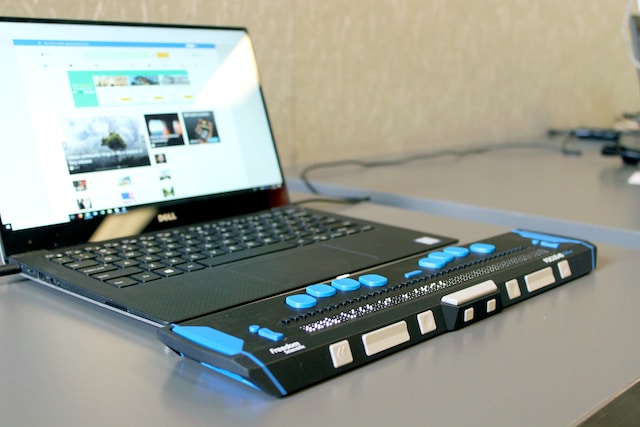Exploring the Essential Elements of Inclusive Technology Systems
How to ensure inclusive technology systems so all learners can access learning tools and resources

Technology in the classroom is part of our everyday world and, as part of that, we must ensure that all students have access to the devices and the content they need for learning. Accessibility ensures everyone, including those with disabilities, can use and benefit from products, services, and information.
“In many cases, students with IEP and 504 plans and students who do not have an identified disability need access to tools to leverage that content,” says Christine Fox, Project Director, Center on Inclusive Technology & Education Systems (CITES) at CAST, a nonprofit that helps students with learning differences succeed in school and life. “Inclusive practices previously have been siloed in school districts, with the special education and assistive technology department focused on supporting students with disabilities, while the edtech and IT department focused on providing resources for everyone. However, there is a genuine need for collaboration across the district from the top down with edtech solution providers to ensure that inclusive practices start at the top.”
Fox will present on this topic at Tech & Learning’s upcoming EdExec Summit. Below, she shares insights and guidance for solution providers to ensure inclusive technology ecosystems so all learners can access personalized tools and resources.
Develop and Design
Prioritizing accessibility in development and design doesn't ensure equitable student learning. Simply accommodating accessibility needs without a broader understanding of district requirements leads solution providers to modify tools retroactively. Fox says that technology should be seamlessly integrated into the district's existing systems rather than treated as a mere add-on.
To ensure that edtech products and programs are available to all learners, Fox offers the following basics for solution providers to help create a more inclusive educational environment, improve their company's reputation, and promote positive change in the industry:
- Make sure products and programs are accessible to people with disabilities.
- Consider the needs of all learners, including those from diverse backgrounds and with different learning styles.
- Use inclusive language and images in products and programs.
- Collect feedback from learners and use it to improve products and programs.
- Partner with organizations that are working to make education more inclusive.
Forging Partnerships
The assistive technology sector is witnessing an emerging trend of collaboration and comprehension.
Fox advises solution providers to collaborate with state and national assistive technology organizations implementing these technologies in schools. A partnership enhances their understanding of students' disability-related needs, providing optimal and effective solutions.
Tech & Learning Newsletter
Tools and ideas to transform education. Sign up below.
Specifically, these partnerships would allow solution providers to:
- Gain access to a network of experts in the field of assistive technology
- Learn about the latest trends and developments in assistive technology
- Get feedback on their products and services from educators and students with disabilities
- Develop new assistive technologies that meet the specific needs of students with disabilities
A few organizations to consider:
CAST is an example of a nonprofit that provides educational resources and support for students with learning differences, including tools for assessment and intervention and advocacy support. The Center on Inclusive Technology & Education Systems (CITES) at CAST provides a framework to empower school districts to create and sustain inclusive technology systems that serve all students, including students with disabilities who require assistive technology or accessible educational materials.
The Office of Educational Technology (OET) is developing policies and support to provide an inclusive platform for learners with disabilities. The Valuable Perspectives for EdTech Companies one-pager, webinars, and blogs support the value of accessible tools and solutions for everyone.
The Office of Civil Rights (OCR) is the government agency that ensures education access and promotes excellence nationwide through vigorous civil rights enforcement, including accessibility.
The GAAD Foundation, established in 2021, expands on the Global Accessibility Awareness Day's mission and aims to make accessibility a core requirement in technology and digital product development.
Fox hopes to continue to raise awareness of the importance of inclusive technology, understanding the law, and, most importantly, understanding that building with accessibility in mind from the start is the easiest and most ethical thing to do for all learners.
“Numerous resources are available to help district leaders and solution providers in the community,” Fox says. “They can use this as an opportunity to demonstrate their commitment to accessibility, just as many people are obtaining security certifications to demonstrate their commitment to security. We hope that accessibility will become a goal people strive for rather than scramble to achieve.”
